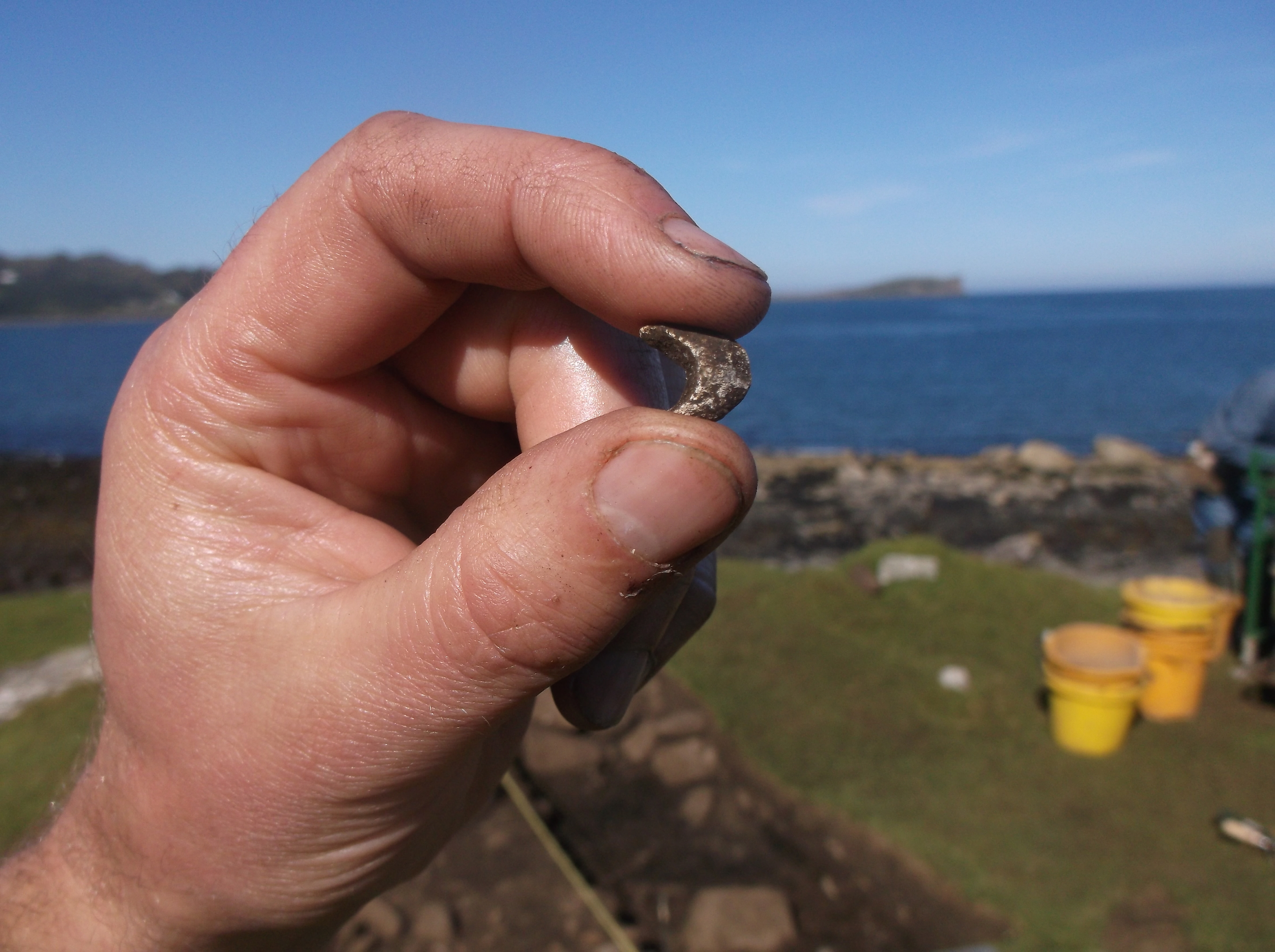An archaeological dig in a north Skye community has uncovered a fragment of worked bone and several hundred flints.
It is hoped that the finds could offer a fuller picture of Staffin’s hunter-gatherer past about 8,000 years ago.
The discoveries were made as University of the Highlands and Islands (UHI) archaeologists investigated a suspected Mesolithic building near Staffin Bay.
While the circular structure itself is expected to be confirmed as post-medieval the discovery of other items, including the possible bead which was recovered from material below it, could provide further clues about life in the area several millennia ago.
The worked bone is just under half an inch long, burnt, and appears to have been deliberately shaped at one end and possibly drilled at the other.
Further analysis is being undertaken by UHI but it is thought it could have been used as a decorative bead or as part of a tool.
More than 200 people took part in the dig over five days, including 10 local volunteers and pupils from Staffin and Kilmuir primary schools.
Dan Lee, UHI lifelong learning and outreach archaeologist, said the site may have been one of several along Staffin Bay where hunter-gatherers congregated and worked stone, possibly targeting fish and mammals at the mouth of the Kilmartin River.
He said: “Although the structure did not turn out to be prehistoric, it has protected significant evidence for Mesolithic activity below it.
“Hopefully we have enough material for radiocarbon dates and further excavation would be useful to better define the extent of the site.”
The dig was organised by Staffin Community Trust, whose director Dugald Ross had monitored the location for several years.
Mr Ross said: “The excavation has given us the opportunity of adding to our knowledge of early habitation of Staffin and although the circular foundation now appears to be a later date than initially thought the lower levels have yielded material which is typical of the first groups of people to have arrived in Scotland after the last Ice Age.”
